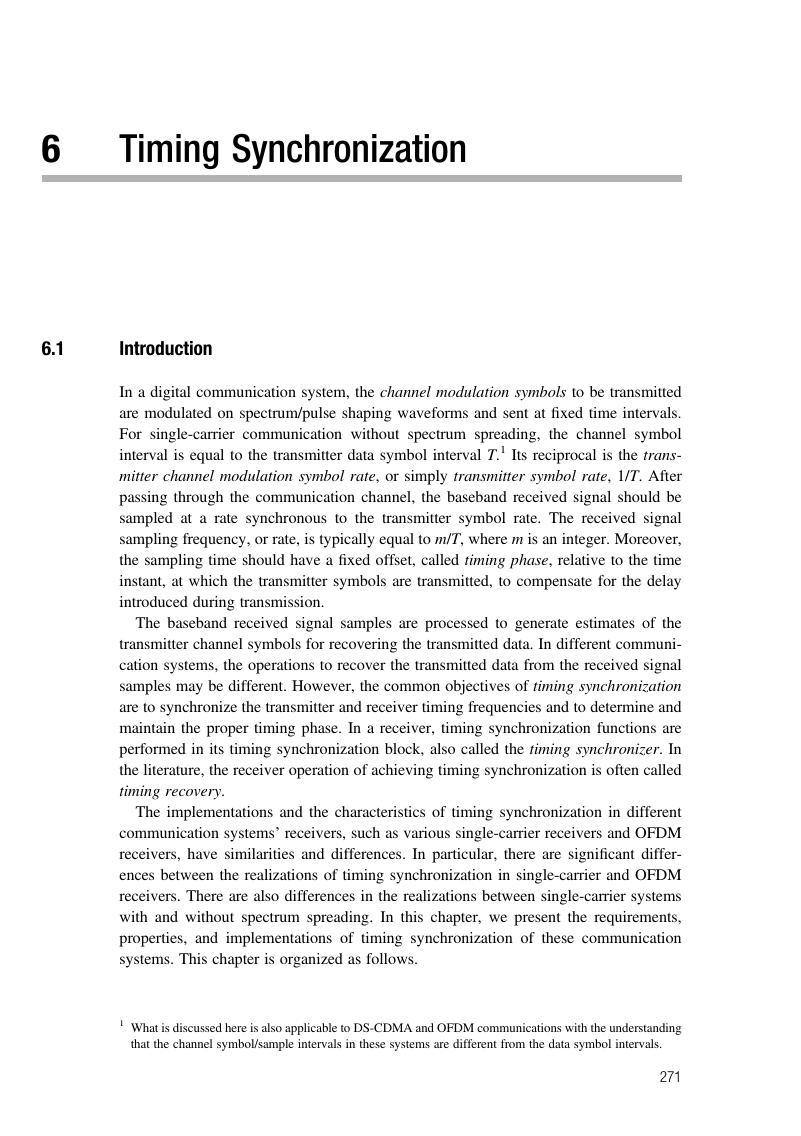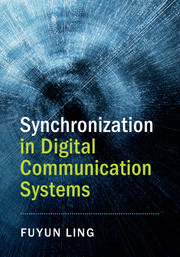Book contents
- Synchronization in Digital Communication Systems
- Synchronization in Digital Communication Systems
- Copyright page
- Dedication
- Contents
- Foreword
- Preface
- 1 An Overview of Digital Communication Systems
- 2 Selected Topics in Detection and Estimation Theory
- 3 Initial Acquisition and Frame Synchronization
- 4 Basics of Phase-Locked Loop Techniques
- 5 Carrier Synchronization
- 6 Timing Synchronization
- 7 Timing Control with Digital Resampling
- Index
- References
6 - Timing Synchronization
Published online by Cambridge University Press: 22 June 2017
- Synchronization in Digital Communication Systems
- Synchronization in Digital Communication Systems
- Copyright page
- Dedication
- Contents
- Foreword
- Preface
- 1 An Overview of Digital Communication Systems
- 2 Selected Topics in Detection and Estimation Theory
- 3 Initial Acquisition and Frame Synchronization
- 4 Basics of Phase-Locked Loop Techniques
- 5 Carrier Synchronization
- 6 Timing Synchronization
- 7 Timing Control with Digital Resampling
- Index
- References
Summary

- Type
- Chapter
- Information
- Synchronization in Digital Communication Systems , pp. 271 - 321Publisher: Cambridge University PressPrint publication year: 2017



